Let's Chat
Have a question?
Call us toll-free at: +1 888-589-5866 or complete the form and someone from the Strategy Squad will be in touch.
No matter the size of your business, whether you’re a one-person wizard trying to make a go of online retail on your own or you’ve got a marketing team of over 30 people, you’re going to need a solid marketing strategy in order to succeed. 🚀
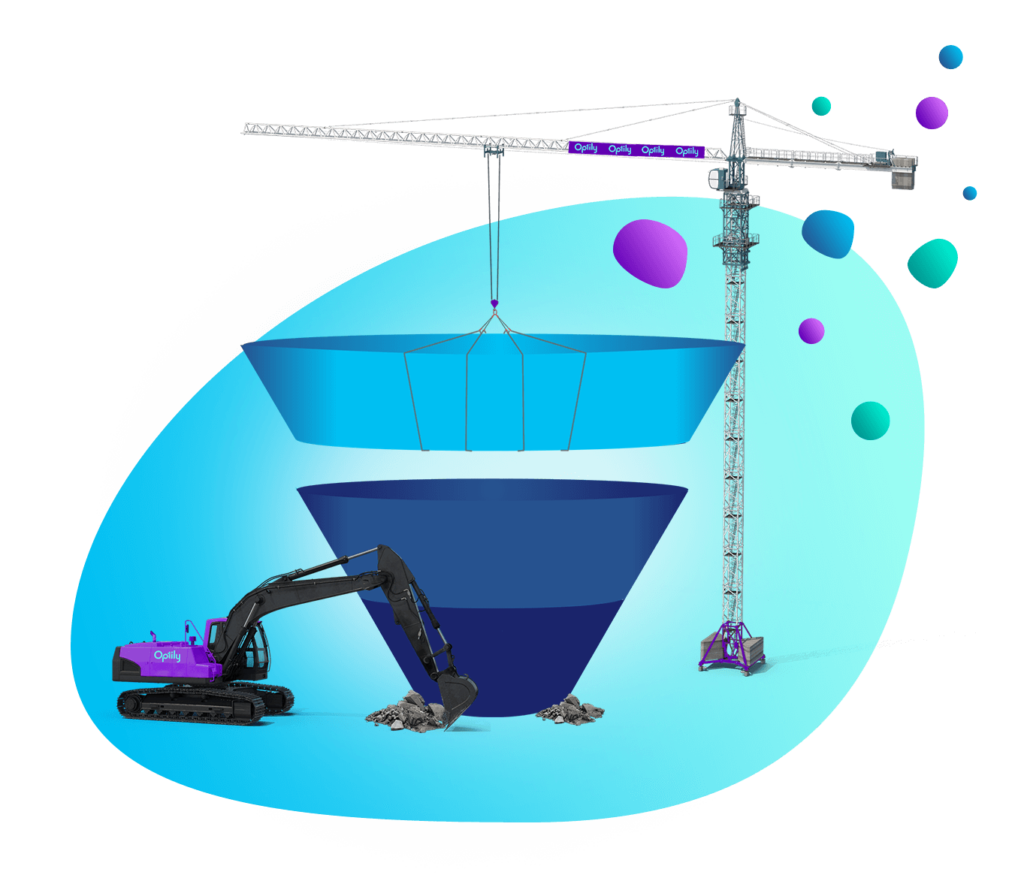
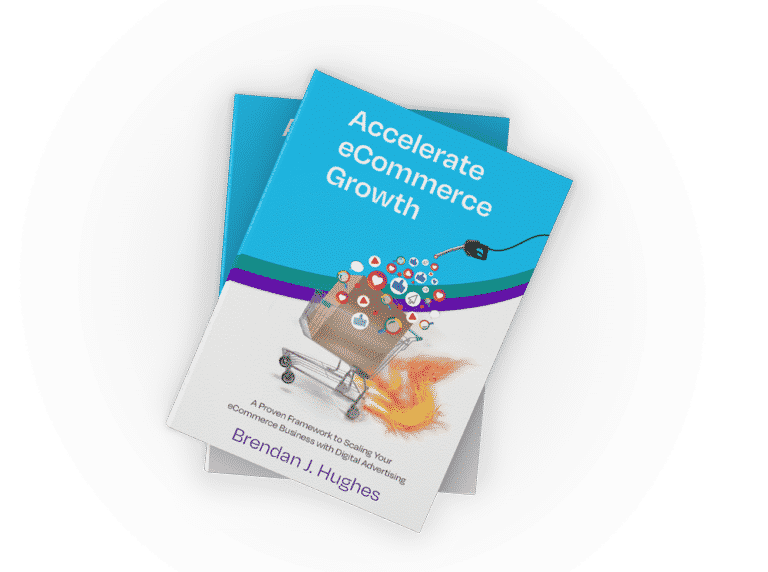
At Optily, making your online advertising more efficient and effective is what we’re all about. This is exactly why we love using the marketing funnel structure with all our clients. Our CEO, Brendan Hughes, is so passionate about helping businesses succeed in digital marketing by using the funnel, he wrote a whole book on it!
Download your free copy today.
In this guide, we’re going to cover a lot. Some of you more seasoned marketing pros might want to skip ahead to the meatier sections below. The team here at Optily is all about making marketing accessible. So we’ll define all our jargon and make sure to explain everything clearly, so it’s not like you’re reading a Harvard Business Review article here.
Feel free to navigate around to the sections that are most relevant to you.
If you’re more of a viewer than a reader, check out this marketing funnel introduction presented by Brendan Hughes, with special guest Charles Chy of Soltech from June.
In November, Brendan and Amy Coyle from the Optily+ team, revisited the marketing funnel again at Ecom World with real-life examples and presented a framework for getting started.
Before we dive into the intricacies of marketing funnels, the main question marketers want to know is whether it’s even worth it to spend time on something. Essentially, you want to know if implementing a marketing funnel into your advertising strategy is going to pay off.
The answer is yes. 💯
Without getting too in the weeds here (don’t worry, you’ll need your weed whacker later on!) a marketing funnel ensures that you spend your marketing dollars more efficiently.
We here at Optily have been in the online ads business for over a decade and we’ve heard the horror stories of tens of thousands down the drain because of improperly structured marketing.
Brendan Hughes, our CEO, likes to bring up the example of his friend Bob who had this exact experience. He was running ads on Google for months and not really seeing any returns on his efforts. He eventually came to the conclusion that it’s just not going to work for him and turned off his ads.
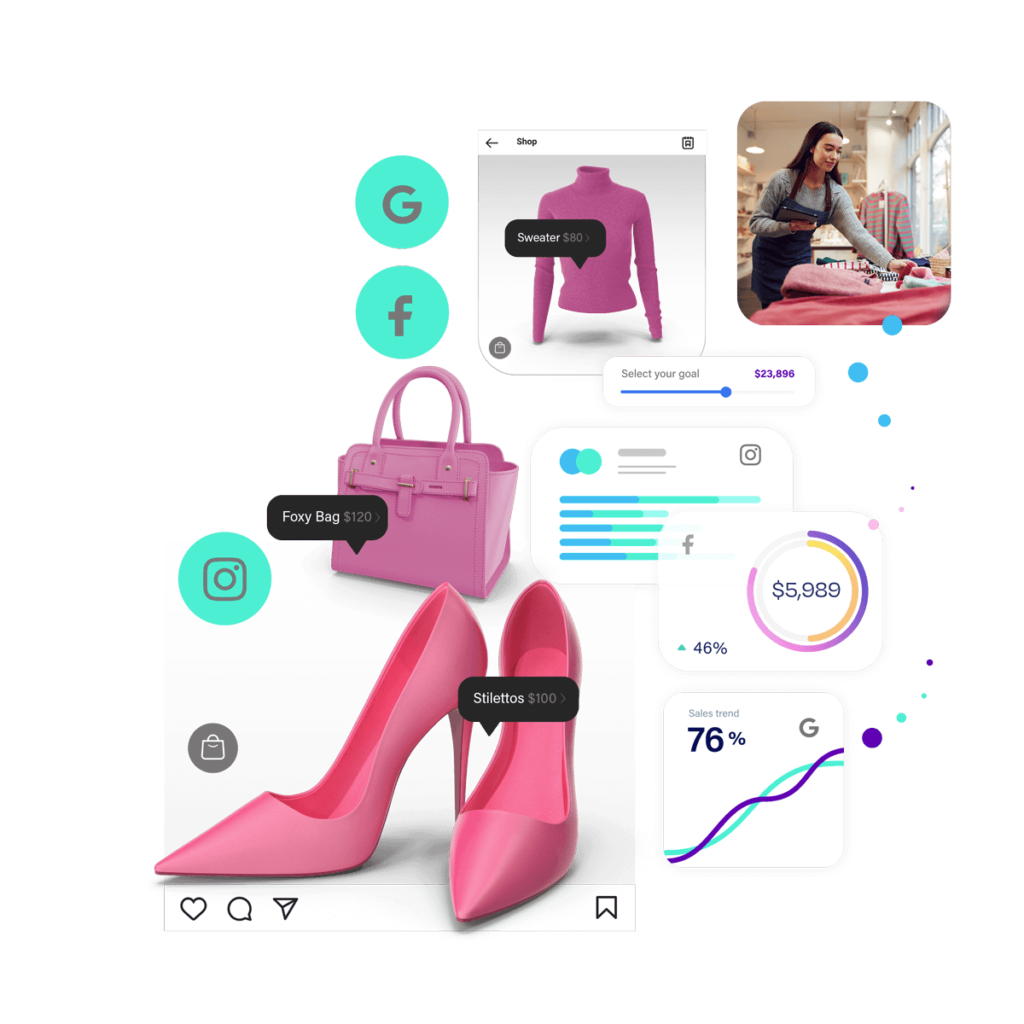
Brendan goes into what happens next and why that’s problematic in a clip from our very first Optily Radio podcast episode:
The problem represented here is two-fold:
By setting up a well-structured marketing funnel strategy and managing it effectively, digital advertising will help you scale.
To learn all about setting up your marketing funnel, keep reading this complete guide to marketing funnels.
Stay up-to-date on platform changes, digital marketing tactics, and industry news. We promise we won’t spam!
If we asked you to think about old timey marketing, you might imagine something like a yellowed newspaper ad back in the Wild West selling an herbal cure all. Well, we’ve certainly come a long way in our delivery methods (and standards) for advertising, but has the theory stood the test of time?
Back in 1898, an ad agency executive Elias St. Elmo Lewis came up with the slogan “attract attention, maintain interest, create desire.” Later on, he added the last bit “get action” which together became the underpinnings of the first marketing funnel.
Eventually, it came together in diagram form into what we’re familiar with today as the AIDA model: attention, interest, desire, and action.
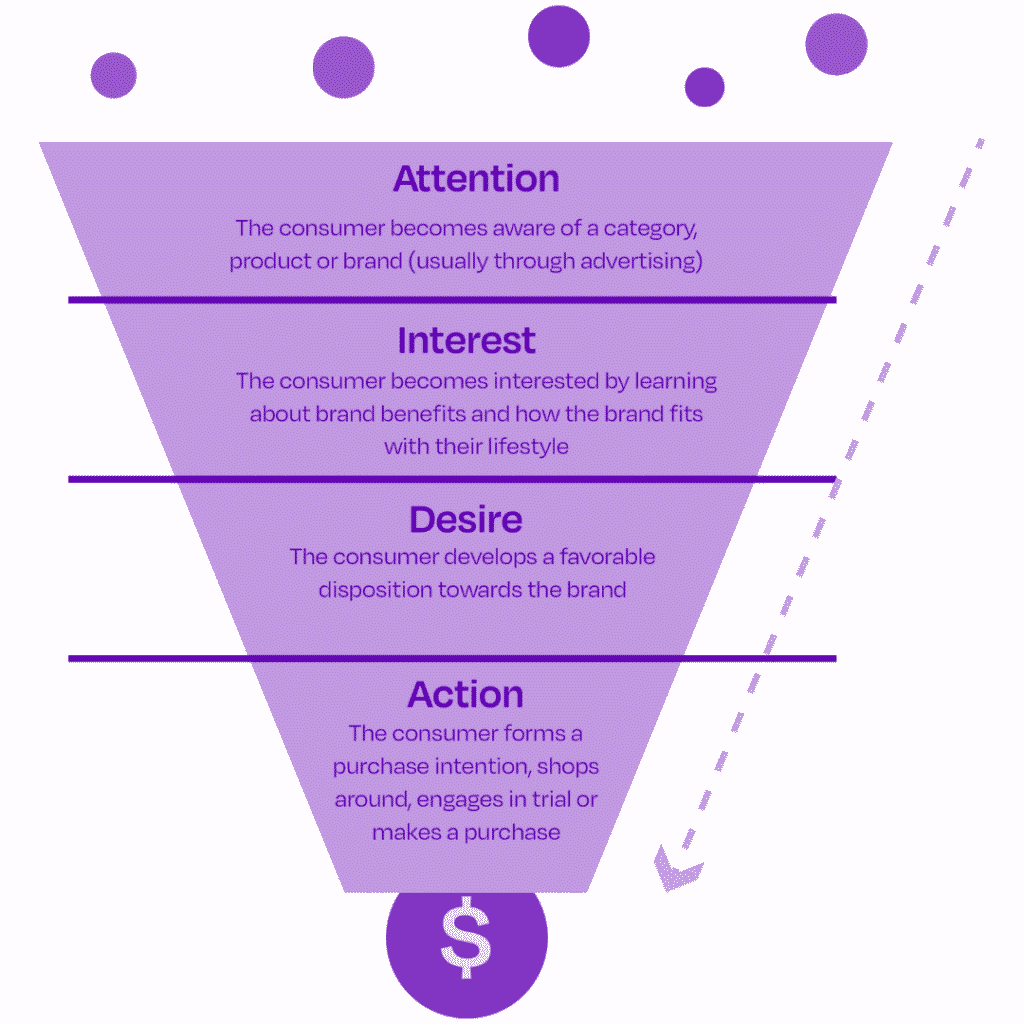
Even if you’re seeing this model for the very first time here, it’s probably very intuitive. We’ve all seen a ton of ads, but been interested in only a select few of the products we’ve been shown. Even fewer of those that we’re mildly interested in do we actually want to own. Of course, of those things we decide we do want, we only actually go out and buy just a few of them.
So, while this structure came about over 100 years ago, we believe that it’s still very relevant to the way shoppers think and make purchase decisions. However, some marketers argue that because the purchase journey has become so complicated with the advent of online ads and eCommerce, it’s simply too simplistic to use a model like this.
We, respectfully, disagree.
Given that there are more ways for people to learn about a brand through various organic or paid promotions, word of mouth, or social media than ever before, the path to purchase can easily get a bit messy.
One of our early Optily Radio guests, Kirk Williams of ZATO Marketing, likes to use the term “maze” in relation to the funnel, which was first introduced in this context by Aaron Levy of Tinuiti. That being said, maze or not, the way people think has stayed pretty consistent.


While it’s clear that the linear path to purchase is not applicable in all cases, since buyer journeys have gotten significantly more complex, that doesn’t mean we should discount the funnel altogether. The number of steps a consumer takes before purchase isn’t really the most important part of the buyer journey, rather it’s the mental process they go through in arriving at the decision to buy.
Now, whether you’re buying an expensive product over a period of months or making a snap impulse buy, you still go through three main stages:
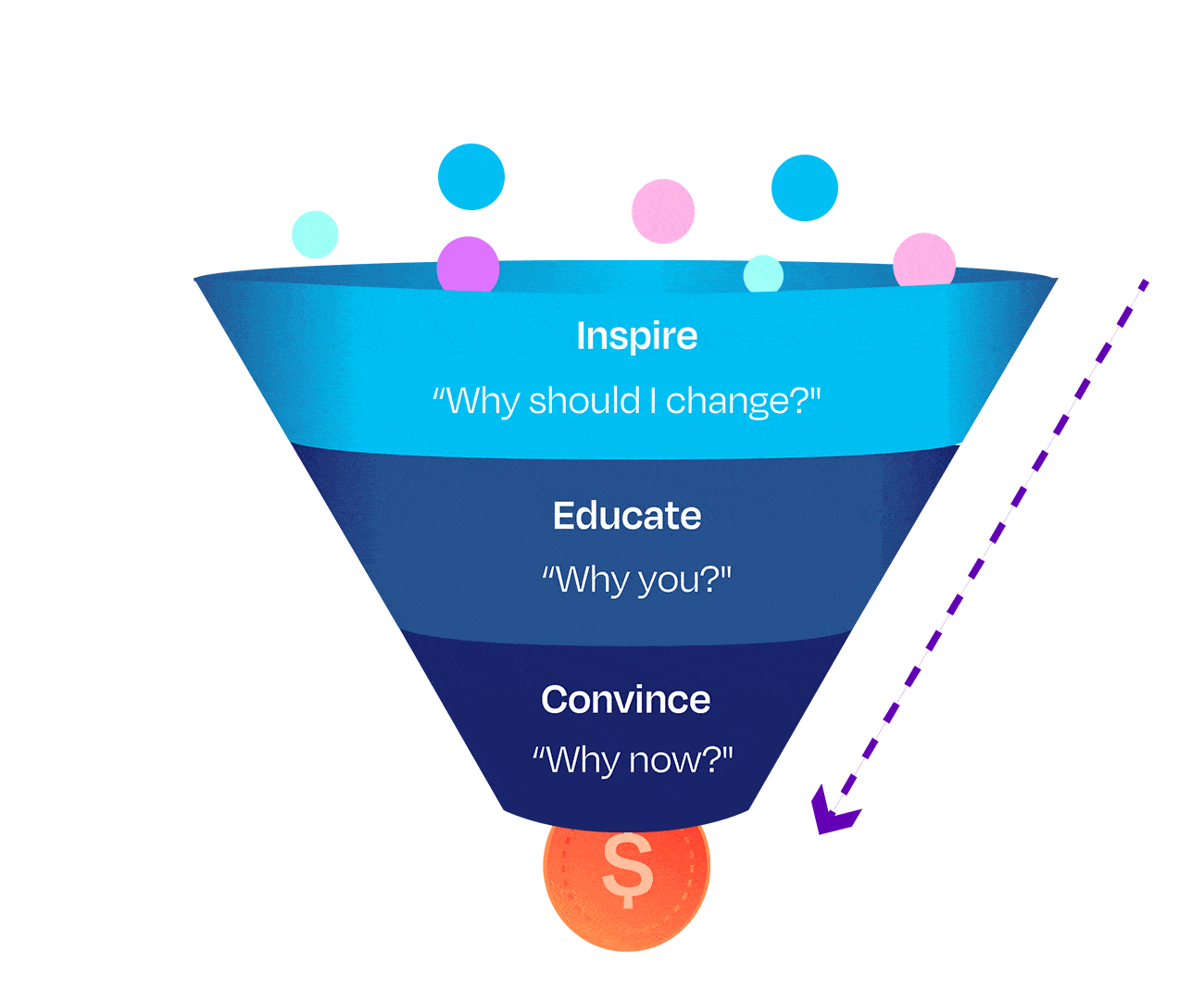
The first step in the purchase decision process is for the shopper to become aware of their current state and recognize that it could be improved. Essentially, without them seeing that there is a problem in their lives, they won’t be looking for a solution to fulfill this need.
The next step the buyer takes is to think about the problem and start gathering information about how they can solve it. The buyer will research various options and weigh the alternatives against each other.
And final stage is to make the decision to buy. Once the person has thought about their options and considered the pros and cons, they will ultimately decide whether or not to buy at that time.
Now, we’ve already mentioned that this thought process can happen on an impulse. We’ve all been at the grocery store checkout lane and seen an enticing piece of candy. We went through the “will we, won’t we” back and forth for a bit, then ultimately grabbed that Snickers in the end.
Unfortunately, when it comes to online retail, we don’t have the luxury of positioning our products on the way to the door (although we will go over upsells and bundles later on). In order for most people to even hear about your brand, you need to run some ads.
The modern adaptation of the marketing funnel takes this buyer psychology map and flips it to ensure marketing is doing its part to nurture the buyer at every stage.
When it comes to marketing theory and diagrams, we have to keep things simple for ourselves. While we do structure the funnel in a linear fashion, it’s important to keep in mind that potential customers can step in at any point in their own unique buying journey.
So, even if someone hasn’t seen a single ad from your brand before, but they’ve already added something to their cart, you want to make sure they’re seeing different retargeting messaging than someone who is completely fresh. This is why it’s super important to employ all the data at your disposal, especially your on-site data, to make sure that the copy and creative in your ads is as personalized as it can be.
In order to build out this type of targeted tiered approach, we use the more updated version of the funnel:
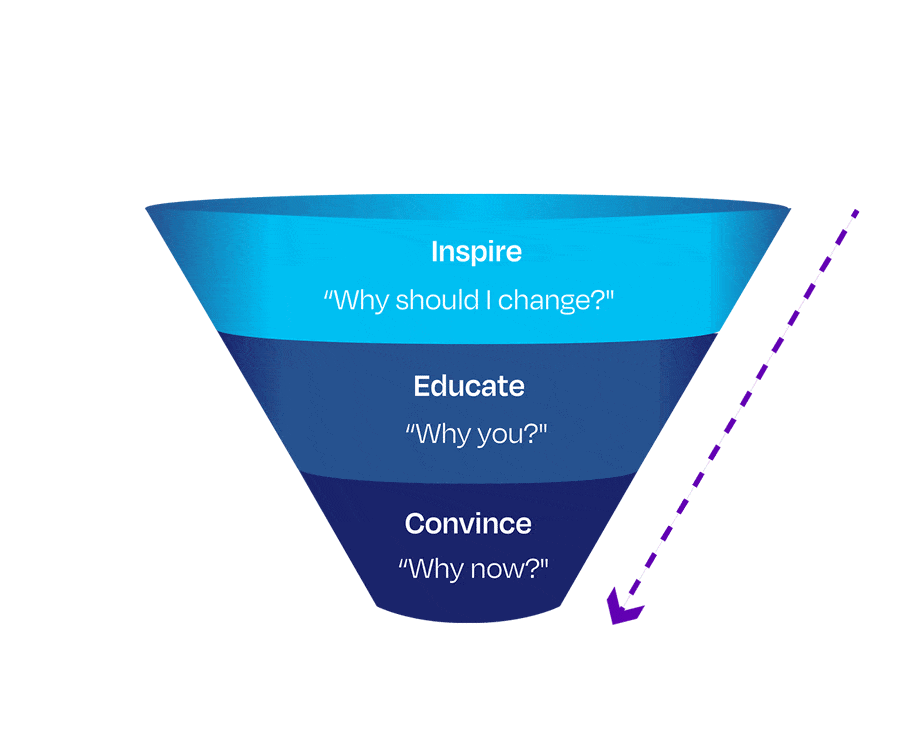
The top of funnel phase is all about brand awareness. You’re trying to get your ad in front of as many eyeballs as possible and see who bites. Of course, you’re still using targeting and going after your ideal customers that you’ve identified through building up customer personas, but this will be your widest audience base across your funnel.
You are approaching people who are unaware of your brand and products, showing them a problem that they might be facing, and presenting your solution. You need to get that “aha” moment of interest where people recognize that there is something that you have that might make their lives easier in some way.
At this stage, you’re warming up cold audiences. You’re looking to get them to reevaluate their current choices and think about why they should change their behavior.
Optily expert tips
In our experience, short-form videos no longer than 15 seconds do well at the top of funnel stage. The major social media platforms are great at enabling interest-based audiences building and are really powerful in feeding the rest of your funnel.
Once people interact with your ad, either by watching the video all the way through, commenting or liking the post, or clicking through to your site, these people now become the focus of your middle of funnel remarketing campaigns.
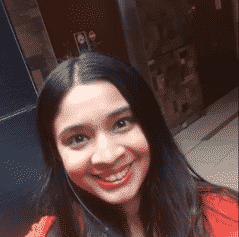

The middle of the funnel is where you really get to showcase your brand story, the diversity of your products, and show potential customers what you’re all about. You’ve piqued their curiosity, but they’re definitely not quite ready to buy just yet. They are in the research phase and you need to convince them why you’re the best.
You’re looking to give them more information at this stage and help them learn about the features and benefits of your product. You want to nurture these warm customers who’ve already expressed an interest in your offering and get them excited about making a purchase.
Fundamentally, the messaging here should focus on explaining why your product is the best solution.
Optily expert tips
At this stage, we often like to use longer-form content than at the top of the funnel. We encourage explainer videos that are 30-45 seconds long or carousels and collections that can showcase multiple features and benefits well.


These people have seen your upper and middle funnel campaigns, been to your site, or are on your mailing list. You know these people are incredibly interested in making a purchase, but they might still have some reservations.
At this stage you need to work on convincing your hot audience why they need to buy and why they need to do so now. The key here is to nudge these highly engaged people to commit to making a purchase by leveraging the power of social proof, authority, and urgency.
Optily expert tips
At the end of the funnel, you want to minimize any distractions. You’re not telling your brand story here, you’re highlighting the main features that will convince someone to convert now. In our experience, still images can work well at this stage on social and Google Shopping for search. Highlight free shipping, discounts, and positive reviews to get people over some of their reservations about continuing through to checkout.


So, now you’ve got a group of people who’ve made it through the funnel and converted. Bravo! 👏 Of course, your job isn’t done yet.
This group has put their money where their mouth is. They saw the thing, they wanted the thing, and they bought the thing.
This group can be extremely valuable if you nurture them in their post-sale experience, guiding them once again through a funnel, or getting them to advocate on your behalf. They are also in a prime position to buy a bit more right after checkout, if you handle things right.
While this might stray ever so slightly from the traditional funnel, upselling and building customer loyalty are a natural progression which ultimately continue the funnel cycle and build up social proof.
Right after a customer checks out is a great time to give them a discount or encourage them to buy a product related to what they just bought. Tons of technologies exist out there that help with bundling and upselling post-sale. We’re big fans of the options our partner, Justuno, provides eCommerce clients.
A lot of metrics go into evaluating eCommerce success, but it’s important to realize that not all checkouts are equal. If you can increase the average order value (AOV) even by 5% with upsells, that can make a huge difference in your bottom line.
Once a customer has already checked out, you’ve got their payment information and their address, so they can easily add a cute $5 pair of socks to go along with their boots without extra friction being added to the process.
Chase Clymer, co-founder of Electric Eye, spoke about how refocusing on AOV as a key metric can benefit a business in the long run:
Encouraging customers to join your community can be a great way to nurture loyalty. There are tons of ways eCommerce businesses do this from simple newsletters, which often give discounts, to loyalty programs, or social media giveaways.
People love being part of an exclusive community. Give your loyal customers sneak peaks or early access to your annual sales. Make them feel special and they will reward you. Social proof in the form of online reviews and word of mouth is not something you can buy (well, you can, but you really shouldn’t!).
Optily Radio guest, Tom Baker, who is the founder and CEO of Amazon agency FordeBaker, discussed the value of reviews and cautioned against any kind of review tampering:
Creating your funnel strategy and planning out your creative and messaging is one thing. Managing the campaigns in your funnel is another. The first step is figuring out how to split your budget across the different stages of your funnel.
The key thing to keep in mind is that not all goals are equal.
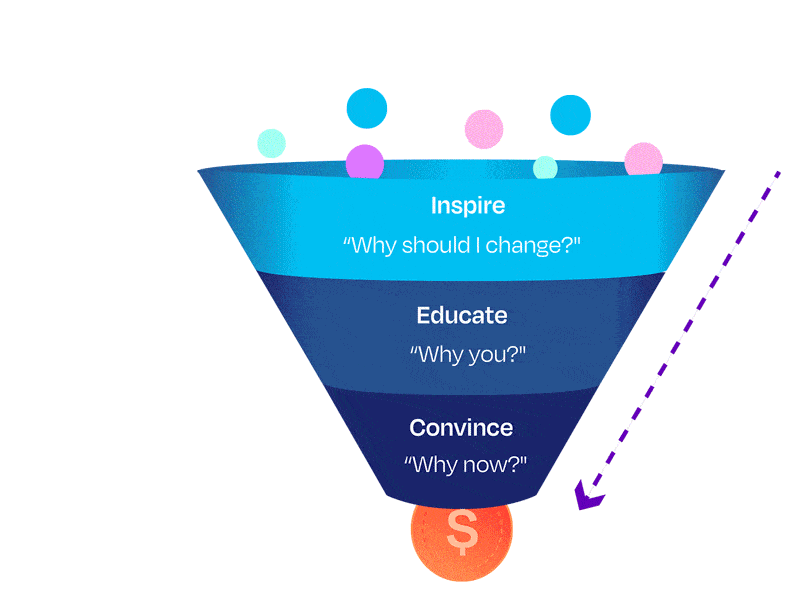
If you’ve ever launched a campaign on Facebook (or do we have to call it Meta now?), the funnel structure should look pretty familiar to you.
When you create a new campaign in Ad Manager, you’re presented with this as your first screen. Basically, Facebook is asking you to identify what stage of the funnel the campaign is in.
Now, if you’ve got everything structured properly, you’ll have at least 3 campaigns–one of each. Feeding into the next one and building up a steady flow of potential buyers who will eventually hit the bottom of funnel conversion campaigns.
Let’s say we’re still selling boots, shoes, and socks online. This is what a simple funnel strategy for social media could look like.
As you can see from the rising costs per action as we move our way down the funnel, it’s really important to narrow the audience as you go.
If not, you’ll end up with a wide upper-funnel audience, spending at a high CPC, and having little to show for it in terms of sales. Unfortunately, we see this far too often with those new to marketing. They quickly burn through their budgets and are likely to not see the value in continuing with online advertising altogether.
With some simple restructuring–that can easily be done in a matter of days–they can get right back on track.
This is of course going to vary a bit depending on your sector and results, but research by Les Benet and Peter Field shows you want to aim for a 60/40 split. This means you’ll be using 60% of your total budget for prospecting in the top and middle of funnel campaigns, while reserving 40% for the pricey conversions at the bottom of the funnel.
It’s actually very important to to keep a balance split between your upper funnel activity and lower funnel. Although the bottom of funnel is where the majority of your conversions come from, if you’re not properly prospecting then you’ll end up starving the bottom of funnel retargeting audience.


While you might be able to see some short-term gains if you only invest in the lower funnel, overall, your company’s growth will suffer as a result of no brand building campaigns.
So while you might have a good split between your stages that ensure a constant flow from top of funnel campaigns down, how do we manage individual campaigns’ ad sets and ads?
Our main suggestion is to leverage automated optimization and bidding strategies.
Facebook, for example, let’s you toggle on Campaign budget optimization (CBO) which automatically moves around your campaign budget across various ad sets. Their powerful algorithm takes away the manual aspect of figuring out which ad sets within each campaign are performing best on a given day.
Google is really pushing its automated bidding strategy and discouraging the use of Manual CPC bidding. The algorithm adjusts your bid automatically based on the likelihood of a click. Smart Bidding takes this one step further and factors in even more variables to maximize conversions.


The big issue with the giants of online advertising is they simply don’t talk to each other. You can enable your Facebook automations and your Google automations separately, but they don’t integrate. This is where Optily steps in.


From years of working with agencies and eCommerce brands of all sizes, we’ve learned the difficulties of attribution and figuring out where to put more budget and when. Optily enables you to build a marketing funnel inside our dashboard by pulling in campaigns from Facebook, Instagram, Google, and YouTube.
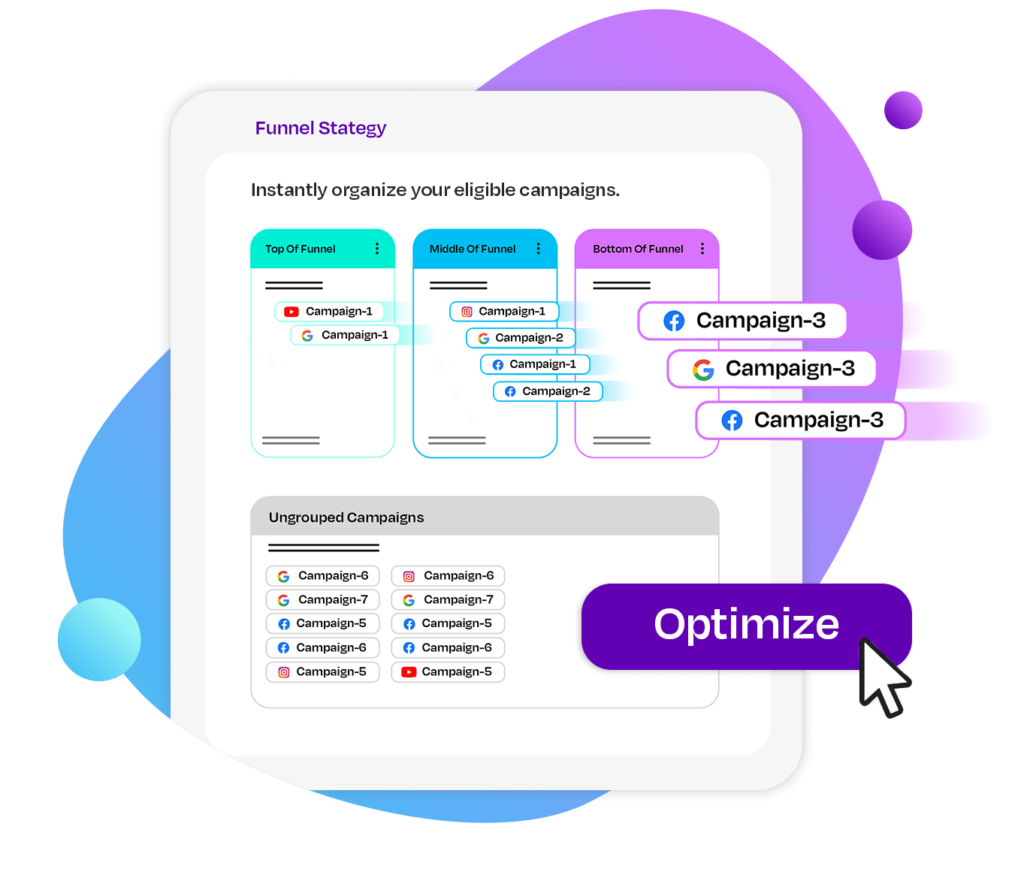
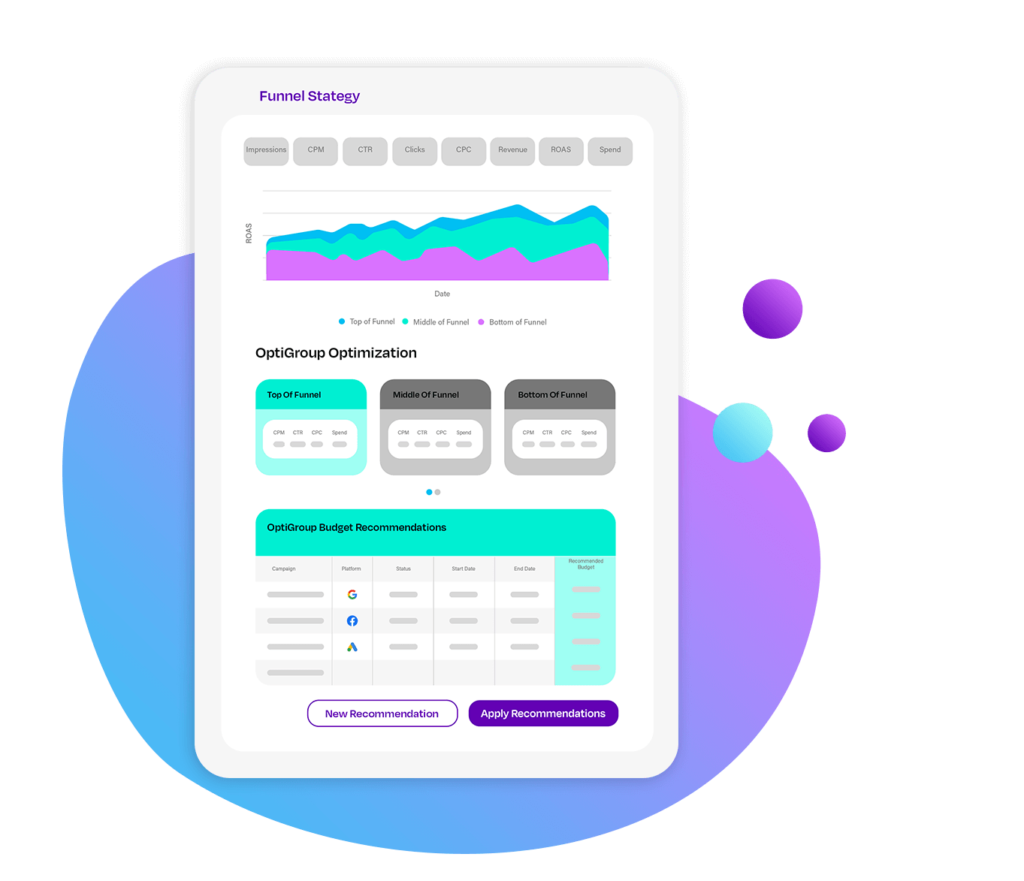
Once the eligible campaigns are sorted into their respective funnel stages based on their goals, the instant optimization begins. Without changing any of your overall budgets, Optily is able to figure out which campaigns have performed the best and recommend how to reallocate the budget to improve results.
At the end of the day, we as marketers don’t really care which platform gets our ad dollars as long as we see results.
Let’s connect!
Connect with the Optily Squad by selecting a time in the calendar. We can wait to show you how Optily can supercharge your business growth
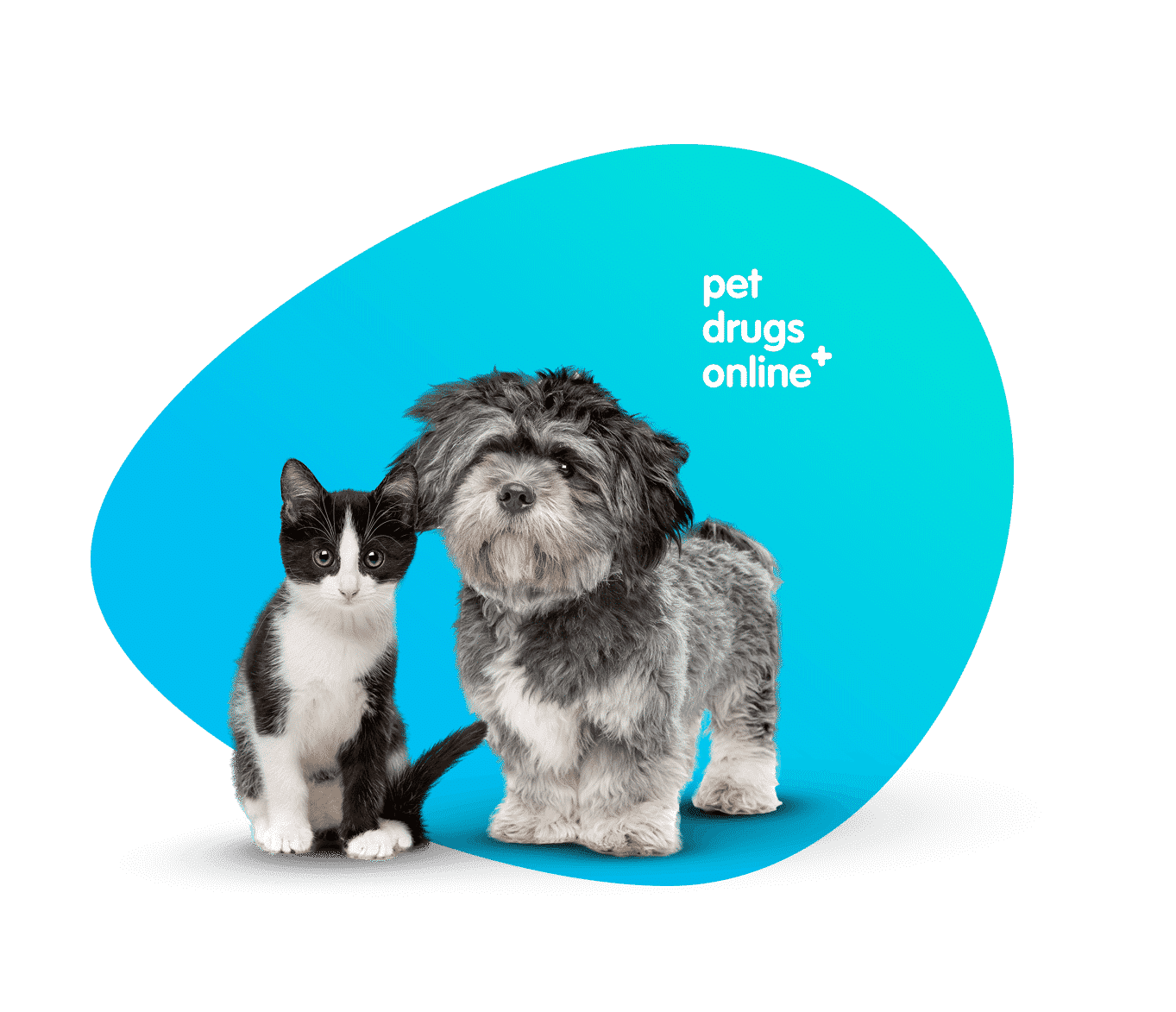
Call us toll-free at: +1 888-589-5866 or complete the form and someone from the Strategy Squad will be in touch.


Optily has partnered with Clearco to provide you with financial tools to grow your business.
Start your funding application below. Approval can take as little as 24 hours and every funded account receives 3 months of Optily software for FREE.
| Cookie | Duration | Description |
|---|---|---|
| cookielawinfo-checkbox-advertisement | 1 year | The cookie is set by GDPR cookie consent to record the user consent for the cookies in the category "Advertisement". |
| cookielawinfo-checkbox-analytics | 11 months | This cookie is set by GDPR Cookie Consent plugin. The cookie is used to store the user consent for the cookies in the category "Analytics". |
| cookielawinfo-checkbox-functional | 11 months | The cookie is set by GDPR cookie consent to record the user consent for the cookies in the category "Functional". |
| cookielawinfo-checkbox-necessary | 11 months | This cookie is set by GDPR Cookie Consent plugin. The cookies is used to store the user consent for the cookies in the category "Necessary". |
| cookielawinfo-checkbox-others | 11 months | This cookie is set by GDPR Cookie Consent plugin. The cookie is used to store the user consent for the cookies in the category "Other. |
| cookielawinfo-checkbox-performance | 11 months | This cookie is set by GDPR Cookie Consent plugin. The cookie is used to store the user consent for the cookies in the category "Performance". |
| elementor | never | This cookie is used by the website's WordPress theme. It allows the website owner to implement or change the website's content in real-time. |
| viewed_cookie_policy | 11 months | The cookie is set by the GDPR Cookie Consent plugin and is used to store whether or not user has consented to the use of cookies. It does not store any personal data. |
| Cookie | Duration | Description |
|---|---|---|
| bcookie | 2 years | This cookie is set by linkedIn. The purpose of the cookie is to enable LinkedIn functionalities on the page. |
| lang | session | This cookie is used to store the language preferences of a user to serve up content in that stored language the next time user visit the website. |
| lidc | 1 day | This cookie is set by LinkedIn and used for routing. |
| Cookie | Duration | Description |
|---|---|---|
| _ga | 2 years | This cookie is installed by Google Analytics. The cookie is used to calculate visitor, session, campaign data and keep track of site usage for the site's analytics report. The cookies store information anonymously and assign a randomly generated number to identify unique visitors. |
| _gat_gtag_UA_30310259_10 | 1 minute | This cookie is set by Google and is used to distinguish users. |
| _gid | 1 day | This cookie is installed by Google Analytics. The cookie is used to store information of how visitors use a website and helps in creating an analytics report of how the website is doing. The data collected including the number visitors, the source where they have come from, and the pages visted in an anonymous form. |
| ajs_anonymous_id | 1 year | This cookie is set by Segment.io to check the number of ew and returning visitors to the website. |
| ajs_user_id | never | The cookie is set by Segment.io and is used to analyze how you use the website |
| CONSENT | 16 years 4 months 4 days 13 hours | These cookies are set via embedded youtube-videos. They register anonymous statistical data on for example how many times the video is displayed and what settings are used for playback.No sensitive data is collected unless you log in to your google account, in that case your choices are linked with your account, for example if you click “like” on a video. |
| Cookie | Duration | Description |
|---|---|---|
| _fbp | 3 months | This cookie is set by Facebook to deliver advertisement when they are on Facebook or a digital platform powered by Facebook advertising after visiting this website. |
| bscookie | 2 years | This cookie is a browser ID cookie set by Linked share Buttons and ad tags. |
| fr | 3 months | The cookie is set by Facebook to show relevant advertisments to the users and measure and improve the advertisements. The cookie also tracks the behavior of the user across the web on sites that have Facebook pixel or Facebook social plugin. |
| IDE | 1 year 24 days | Used by Google DoubleClick and stores information about how the user uses the website and any other advertisement before visiting the website. This is used to present users with ads that are relevant to them according to the user profile. |
| NID | 6 months | This cookie is used to a profile based on user's interest and display personalized ads to the users. |
| test_cookie | 15 minutes | This cookie is set by doubleclick.net. The purpose of the cookie is to determine if the user's browser supports cookies. |
| VISITOR_INFO1_LIVE | 5 months 27 days | This cookie is set by Youtube. Used to track the information of the embedded YouTube videos on a website. |
| YSC | session | This cookies is set by Youtube and is used to track the views of embedded videos. |
| yt-remote-connected-devices | never | These cookies are set via embedded youtube-videos. |
| yt-remote-device-id | never | These cookies are set via embedded youtube-videos. |
| Cookie | Duration | Description |
|---|---|---|
| __tld__ | session | No description |
| _calendly_session | 21 days | No description available. |
| AnalyticsSyncHistory | 1 month | No description |
| li_gc | 2 years | No description |
| m | 2 years | No description available. |
| S | 1 hour | No description available. |
| UserMatchHistory | 1 month | Linkedin - Used to track visitors on multiple websites, in order to present relevant advertisement based on the visitor's preferences. |